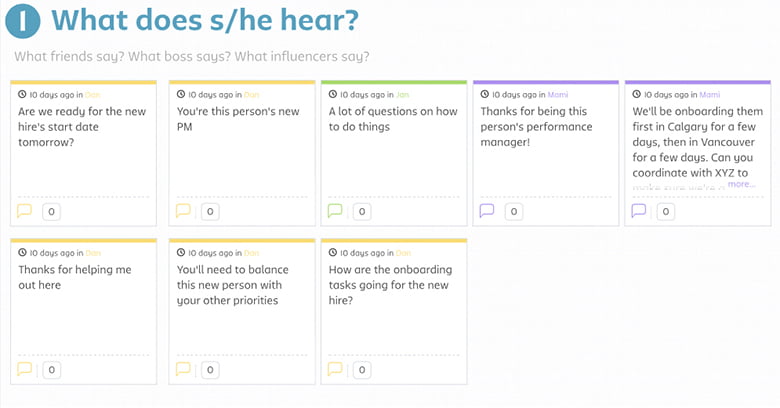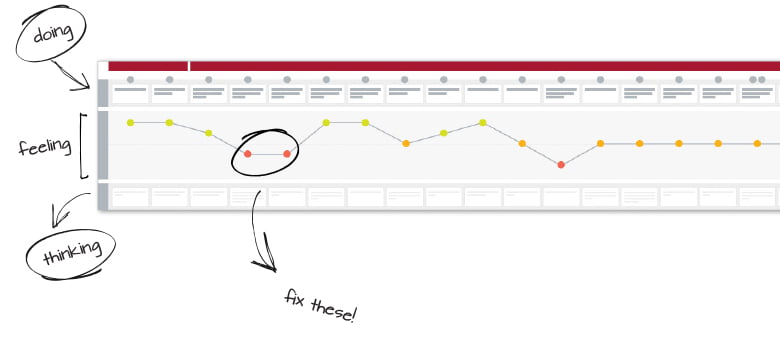Onboarding has long been a passion for us at Habanero as it deeply resonates with our vision of helping people and organizations thrive. In the spirit of continuous improvement, we recently decided to apply experience design methodology to our own onboarding experience.
What do we mean by experience design?
Instead of creating yet another definition of experience design, I’ll share one from Emile H.L. Aarts and Stefano Marzano that I find particularly helpful:
“Experience design is the practice of designing products, processes, services, events, and environments with a focus placed on the quality of the user experience and culturally relevant solutions.”
At Habanero, we wanted to shift the altitude at which we view and evaluate our onboarding experience. In other words, if we were looking at onboarding experience from a 100-foot perspective, we would want to escalate the perspective to a 10,000-foot view. By doing so, we could effectively see all of the potential channels, relationships, and impacts on onboarding at Habanero—whether it’s the hierarchy of our organization, the role of our employee portal, or even the layout of our offices.
What’s our process?
To follow through with the experience design approach, we landed on three core work streams:
Understand our own onboarding story
The first step was to assess and understand the current state of onboarding at Habanero. Although we, the project team, could each draw from our own experience, we extended our interview scope to include folks across the organization including new Habanero employees, IT, finance, staffing, office administration, performance managers, and employee experience stakeholders. From these sessions, we were able to develop a shared understanding of successes and areas requiring improvement.
We also held a session with members of the leadership team to identify the business drivers for improving onboarding: increasing productivity, gaining role clarity, developing acceptance of culture, and building self-efficacy.
Capture today’s experience
The next step we took was to use experience design tools and techniques to understand what the journey and experiences were like for new employees and managers.
We started with an empathy mapping technique with each of our audiences to understand how each of them is thinking, feeling, hearing, seeing, and doing throughout the onboarding experience.
This portion of an empathy map captures what an audience is hearing. You can follow this same process for thinking, feeling, seeing, and doing as well—all critical points when mapping and improving an experience.From there, we collaborated with representatives from each audience to create experience maps that identified all of the moments in the process that added up to the collective onboarding experience. We were then able to reveal critical moments, along with the factors that shaped these instances, which highlighted where things go well for new employees and where the experience falls short.
Create the future experience
Armed with our organization’s onboarding story and opportunities we identified, we crafted a vision, a set of guiding design principles and a roadmap for evolving the onboarding system.
For example, one of our guiding principles was to emphasize people first to ensure that we wouldn’t lose sight of the emotional experience of everyone involved.
This principle is evident in subtle ways throughout the onboarding solution we developed, such as including photos of everyone involved in the process so that the new employee can put a face to a name and know who to reach out to for support.
The experience map and roadmap have since become the playbook for our future onboarding work with all the people, process, and technology dimensions of the onboarding system.
What did we learn?
Don’t start with technology, but expect to get there eventually
For an organization that prides itself on innovative technology solutions, this may come as a surprise, but we were confident going into this that building a technical solution alone wasn’t going to resolve all of the pain points with our onboarding process. Experience design helps us consider all of the possible channels that onboarding encompasses (both online and offline) and supports the rationale for any technical solution we may eventually implement.
Early in the process we realized that a few of Habanero’s business drivers could be complemented by technology, but social and cultural considerations would play an equally instrumental role.
One of our business drivers is to ensure new employees have increased clarity in their role. To this end, we assessed a number of experiences in the hiring process related to this driver. What we discovered was that by simply moving the job title from after the employee was hired to before the offer letter was signed, we were able to improve the onboarding experience for all parties involved because we started with role clarity rather than seemingly addressing it as an afterthought.
Don’t overlook what’s working well
While it was tempting to immediately hone in on the pain points, we also wanted to be mindful of the areas of the process that were currently working well. The experience mapping process we followed ensured that it was just as easy for us to profile the high points as it was to analyze the low points for opportunities.
This was also a great reminder to recognize the people who were already doing great work and creating positive experiences for new employees. There were a number of good experiences we wanted to make great in addition to resolving pain points and frustration.
One example was evolving our digital resource library for new employees. We have a number of recommended readings that are relevant for all new employees, but we realized that providing role-specific resources was being left up to the new employee’s performance manager. In some cases, the new employee and the manager shared similar expertise and interest spaces, but in other cases where each had different roles at Habanero, the manager would have to do more digging. One centralized resource library with role-specific recommendations was proposed to take something that was working well and make it better for everyone involved.
Be consistent where it matters
Consistency was a hot topic throughout the research process. On one hand, there’s a desire to ensure that every new employee has a similar experience. On the other, each new employee is different and each of our offices has its own variation of the broader Habanero culture.
Ultimately, by putting experience design into practice internally at Habanero, we were able to reveal insights and opportunities that we wouldn't otherwise have uncovered.








